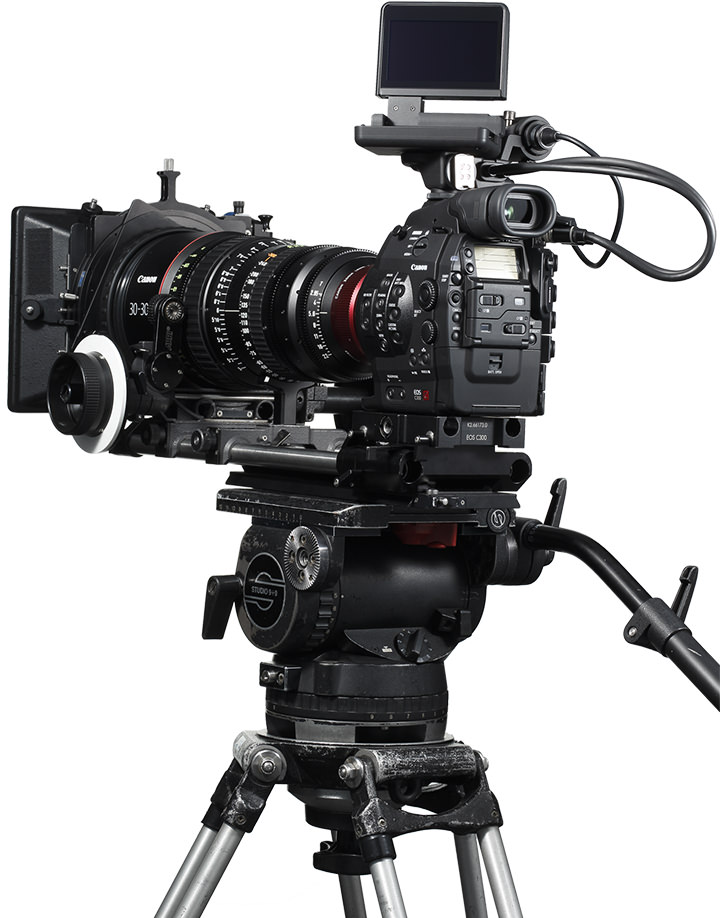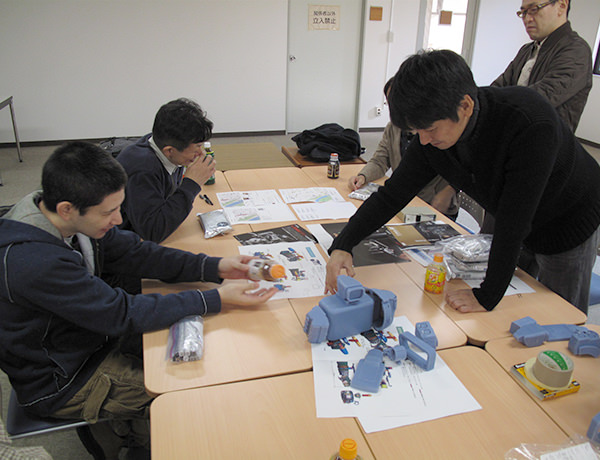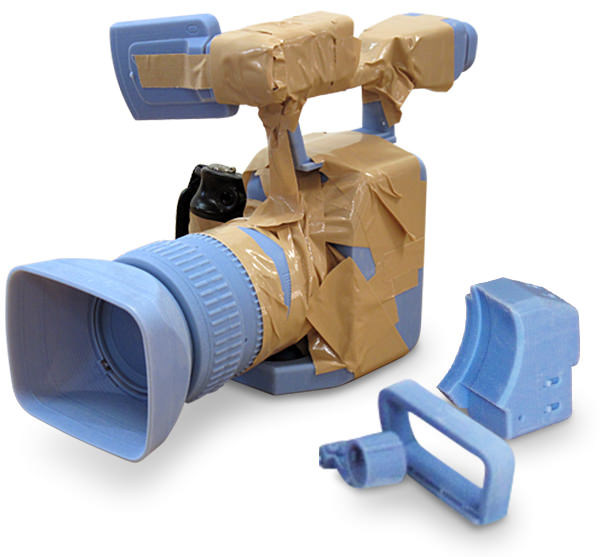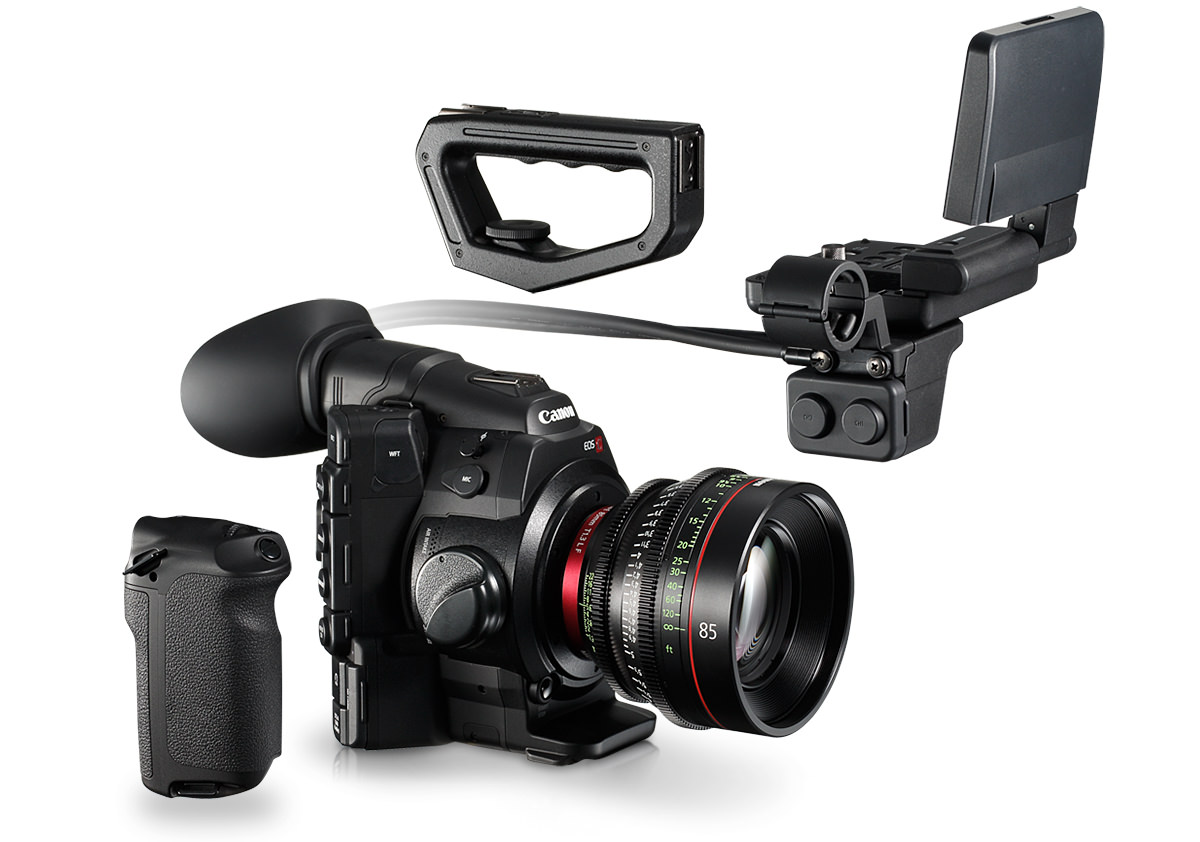
Answering the Needs of Frontline Users
Canon has gained a wealth of experience and skill through its development of professional video cameras that have won wide acclaim among video journalists and other users on the leading edge.
This expertise, however, wasn't necessarily applicable to the development of cinema cameras, which are required to excel at capturing nuanced images — something entirely different from the journalists' demand for a professional video camera that must accommodate rapid and spontaneous use.
Canon realized that development of the Cinema EOS System would require thorough research at film sets amid all kinds of conditions.
The design team frequently visited film sets and listened to filmmakers outline their needs. In addition to listing the basic functions required in a professional video camera — including reliability, expandability, and ease of operation — they frequently emphasized their need for a more maneuverable camera.


“Mobile Core Design” - The Secret to Greater Freedom of Cinematic Expression
So-called kissing-distance filming — a method of positioning a camera as close as physically possible against a wall or floor — is one of the most difficult techniques to achieve with a large cinema camera. Yet many camera operators requested that the EOS 5D Mark II incorporate this exact capability.
“The maneuverability of cine-cameras is opening new doors to visual interpretation in the world of professional moviemaking.”
Without hesitation, the design team identified maneuverability as their primary design objective for the Cinema EOS System.
The design process for achieving this goal was a classic case of trial and error. To find the right form, the designers fashioned models of some of the major parts and assembled them like toy blocks. They then used a hands-on approach to test the ease of operation of each configuration.
This approach led them to devise the concept of Mobile Core Design as the prototype of the Cinema EOS System. This upright configuration featured a slim, squat body with a minimal front-to-back dimension. This compact main body was specifically designed to support hand-held camerawork yet afforded users the option to add various modular functions as necessary. The goal was to offer expandability to rival expensive cinema cameras while maintaining superior maneuverability.
The Mobile Core Design concept sprang from a belief in the "less-is-more" approach, which itself was the result of a detailed research in the studio and in the field.


